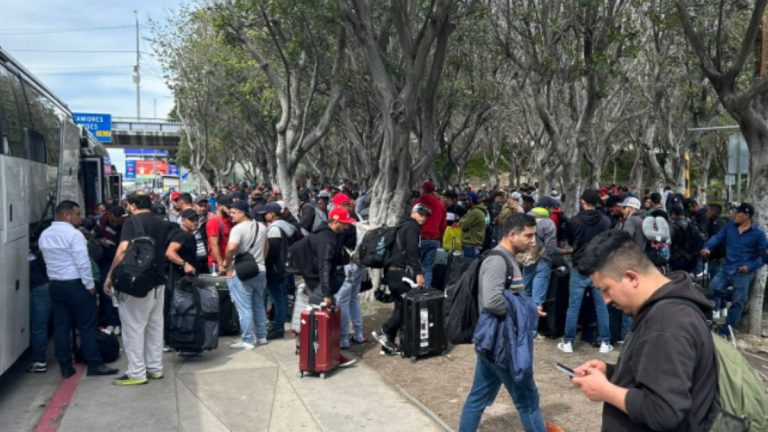Policy

By Noel Fitchett for The Policy Insider
There are more slaves today than at any other time in history. Of the nearly 50 million people living in modern slavery, an estimated 28 million live in forced labour.
America is among the top destinations for child trafficking and exploitation. In America, human trafficking traps between 14,500 and 17,500 illegal immigrants every year, many of whom are children. While D.C. lawmakers hold border concerns hostage regarding foreign aid funds, the illegal practice continues to rise.

Many individuals opposed to Texas' barbed wire policy say America should embrace immigrants because we are a nation built by immigrants; We should “welcome the foreigner and love our neighbor.” While this sentiment is valid, true hospitality includes more than simply opening our borders without proper vetting, as this can unwittingly expose individuals to exploitative situations such as forced slavery.
The United States has more immigrants than any other country. Immigrants to America represent one-fifth of the world's immigrants, with more than 40 million living in the United States.
Nearly a quarter of immigrants are undocumented — that's more than 10 million people, more than 3 times the population of Los Angeles.
Immigrant status, and specifically, undocumented immigrant status, creates an easy demographic to exploit. According to a Polaris Project report, between 2015 and 2018, of the 17,000 potential victims whose immigration status was registered, more than half (about 52%) were foreign immigrants to the United States. The three most important types of trafficking for victims from Latin America are agriculture, domestic work, and construction. In the agriculture sector, 76% of potential victims of labor trafficking are migrants, and nearly half of them are from Mexico. Regarding trafficking in domestic workers, 92% of victims were foreign nationals.
Thousands of them are children. Last year, at a Congressional Oversight Committee hearing, the director of the Office of Refugee Resettlement failed to answer how the U.S. Department of Health and Human Services lost more than 85,000 migrant children in the past two years.

Thousands of migrant children continue to cross the southern border without their parents, and many end up in illegal jobs, including factories, slaughterhouses, industrial dairy farms and more.
Desperate to financially support their families and escape poverty, young teenagers and children as young as 10 leave their homes with smugglers who promise to cross them into the United States. In return, the teens must pay off their debts to gain their freedom. The debt culminates in transportation fees and “room and board,” typically dangerous and unregulated living environments with little food.
In one of several stories published by The New York Times, 13-year-old Neri Katzal was forced into labor by a sponsor he found on Facebook Messenger. Neary owed more than $4,000 for travel, had no place to live, and continued to rack up new debt: $140 to fill out HHS paperwork, $240 for clothes from Walmart, and $45 for a taco dinner.
Migrant children are often forced to work more than 12 hours during the day and night shifts and are subjected to life-threatening working conditions. They were yanked into industrial machinery and fell to their deaths from rooftops.
Child labor was banned in 1938 with the passage of federal child labor provisions in the Fair Labor Standards Act of 1938, but just last year, migrant children were found packaging Lucky Charms, Chetos, Skittles and McDonald's products.
According to New York Times interviews with caseworkers, two-thirds of all unaccompanied migrant children end up working full-time.

Arriving in the land of the free only to be directly enslaved is the reality for many migrant and migrant children when governments fail to implement strong, broader policies.
A recently failed bipartisan border bill introduced in Congress would have allocated $20.2 billion to “improve the security of America’s borders.” Sadly, it was tied up with an additional $91 billion in controversial foreign aid money, not to mention an arbitrary $2.72 billion for domestic uranium enrichment. In the end, only 17% of the bill's allocation would have gone to the border.
If lawmakers are serious about fixing problems at the border — and they should all be serious — they should stop making border funds conditional on foreign aid.
The truth is that there is simply too much disagreement in Congress, and across the country, over foreign aid. Nearly half of Americans believe the United States should spend less on aid to Ukraine. In contrast, nearly 70% of Americans agree that immigration is a positive thing.
Weak borders hurt migrants. When governments neglect to enforce strong border policies, the promise of freedom and opportunity sought by migrant children and families is replaced by the harsh reality of slavery. This is a problem that a majority of Americans want solved. Lawmakers must do their part to end slavery in the United States.
Noelle Fitchett is a Young Voices contributor and first-generation college graduate from Los Angeles. She holds a master's degree in economics from Texas A&M University and a graduate certificate in international affairs. She received a philosophy degree from California State University Fullerton and currently works at Remnant News. Follow her on Twitter: @noellefitchett.

